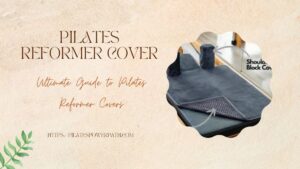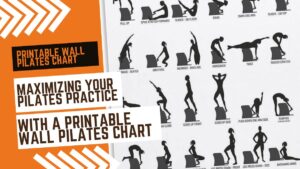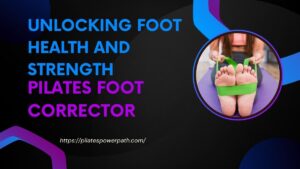Pilates Reformer machines are a staple in the world of Pilates, known for their versatility and effectiveness in delivering a comprehensive full-body workout. Built to strengthen the core, improve flexibility, and enhance balance, these machines feature a unique component that sets them apart – the springs.
Springs are crucial to the functionality of Pilates Reformer workouts. They provide adjustable resistance which can be increased or decreased to meet individual strength levels and fitness goals. This makes the workout customizable and suitable for people of all fitness levels.
In this blog post, we will dive into the role of springs in Pilates Reformer workouts, how different spring tensions affect your workout, and tips for maintaining your springs for optimal functionality. Get ready for a revelation in resistance!
Understanding Pilates Reformer Springs
Springs are part and parcel of the Pilates Reformer experience, playing a crucial role in the equipment’s operation. Their primary function is to provide resistance during workouts, enabling users to engage their muscles in a myriad of ways.
Types of springs used in Pilates Reformers
There are primarily two types of springs used in Pilates Reformers – resistance springs and lengthening springs.
Resistance Springs
Resistance springs are the most commonly used in Pilates reformers. They provide the tension or resistance against which your muscles work. By adjusting the number of these springs, you can alter the intensity of your workout, making it as challenging or as comfortable as you need it to be.
Lengthening Springs
Lengthening springs, on the other hand, serve a different purpose. They aid in the process of muscle lengthening and help enhance flexibility. These springs offer lighter resistance and are typically used for exercises focusing on stretch and elongation.
Different colors and tensions of springs
Springs in Pilates Reformers often come in different colors, each representing a different level of tension. Yellow springs typically provide the lightest resistance, followed by blue, red, and green springs which offer medium tension. The heaviest resistance is usually provided by black springs.
How springs affect the difficulty and intensity of exercises
The intricacy of springs in a Pilates Reformer workout lies in their ability to modify the difficulty and intensity of exercises. A lesser number of springs or those with lighter tension can make an exercise easier. Conversely, adding more springs or those with heavier tension can make the exercise more challenging. This adjustable tension allows for a wide range of exercises and accommodates users with varying fitness levels.
By understanding the role and functionality of springs, you can fully harness the power of your Pilates Reformer workouts and achieve your fitness goals effectively.
Read More: Maximize Your Pilates with the Roll Like a Ball Exercise
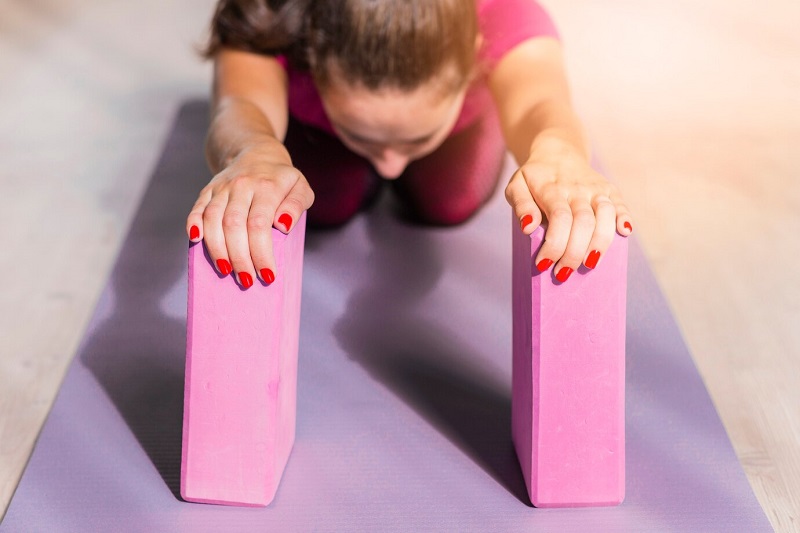
Functions and Benefits of Different Springs
Red Springs
Red springs, despite being considered the lightest resistance springs, play a vital role in Pilates Reformer workouts. They are ideal for beginners who are just starting their Pilates journey or individuals recovering from an injury or surgery. The light resistance provided by these springs makes exercises less strenuous, allowing users to gradually build strength and endurance without straining their muscles. They’re also excellent for exercises that focus on stretching and elongation, promoting flexibility and range of motion. As users become more comfortable and their fitness level improves, they can progress to springs with higher resistance for a more challenging workout.
Blue Springs
Blue springs offer medium resistance and are commonly used in Pilates Reformer workouts for a variety of exercises. They are a step up from the red springs, providing a more challenging workout that targets both strength and flexibility. As the resistance is higher, blue springs require users to engage their muscles more intensively, thereby fostering muscle growth and endurance. They are ideal for intermediate users who have mastered the basics and are looking for a more vigorous workout routine. Also, they can be used in combination with other springs to customize and diversify workouts to keep them challenging and engaging.
Yellow Springs
Yellow Springs is renowned for offering the heaviest resistance in Pilates Reformer workouts, making them the perfect choice for advanced users looking to challenge themselves and push their fitness boundaries. The high tension provided by these springs requires users to exert maximum muscle strength, thereby promoting muscle growth and overall body strength. Yellow springs are perfect for exercises that aim to build muscle endurance and strength. However, they should be used with caution, ensuring that the user has already achieved a certain level of fitness and strength. Remember, the key is to challenge your body, not strain it. Yellow springs are also valuable for exercises that require strong, controlled movement, providing the user with a challenging yet rewarding workout experience.
Black Springs
Black springs offer the strongest resistance among all the springs used in Pilates Reformer workouts. These are recommended for advanced users who have a high level of fitness and are looking for an intense workout to push their boundaries. These springs engage your muscles to their fullest extent, promoting advanced muscle growth, strength, and endurance. They are generally used for exercises that require strong, controlled movements and are not recommended for beginners or those recovering from injury given their high level of intensity. In the hands of an experienced practitioner, however, black springs can deliver a highly effective and challenging workout, pushing the individual toward new peaks of physical fitness. It is always essential to remember the principles of Pilates: control, concentration, centering, precision, breath, and flow while using black springs to avoid unnecessary strain or injury.
Customizing Workouts with Springs
One of the substantial benefits of Pilates Reformer workouts is the ability to customize them according to individual needs, body types, and fitness levels. The key to this personalization lies in the effective utilization of the different springs.
How to adjust springs for different exercises
Adjusting the springs is essential to modify the resistance in different exercises. As a general rule, exercises that involve pushing or pulling the carriage away from the platform require more spring resistance, while those involving pulling the carriage towards the platform need less. It’s advised to start with lighter resistance and gradually increase it as your strength and proficiency improve. Remember, it’s not about how heavy you can go; it’s about performing the exercises correctly and efficiently.
Adapting springs for varying body types and fitness levels
Every individual is unique, and so should their work. The adaptability of springs in a Pilates Reformer allows for this individualization. For beginners or individuals with lower fitness levels, starting with lighter springs such as the red or blue ones would be ideal. On the other hand, more advanced users can opt for higher resistance springs like yellow or black. Similarly, larger individuals or those with stronger muscles may require more spring tension to feel the resistance, while smaller or less muscular individuals may need less.
Creating a personalized workout routine using different springs
The beauty of a Pilates Reformer lies in its versatility. You can create a completely personalized workout routine by mixing and matching different springs. Perhaps you prefer a more challenging workout for your lower body and a less strenuous routine for your upper body. You might use black or yellow springs for leg exercises and red or blue springs for arm exercises. The possibilities are endless, allowing you to keep your workouts fresh, engaging, and in tune with your fitness goals.
Tips for Using Pilates Reformer Springs Effectively
Maintaining proper form and alignment
Maintaining proper form and alignment is crucial when using the Pilates Reformer. Incorrect form can lead to strain or injury and may also diminish the effectiveness of your workout. It’s important to keep your spine aligned, core engaged, and movements controlled. Remember, the machine’s resistance works in conjunction with your body, so even a slight misalignment can throw off your balance and affect your workout.
Listening to your body and adjusting spring tension accordingly
Just as important as maintaining proper form is listening to your body. If an exercise feels overly strenuous or causes discomfort, you should adjust the spring tension accordingly. The beauty of the Pilates Reformer is its adaptability. You can decrease the spring tension if an exercise is too challenging or increase it if it feels too easy. Remember, it’s not about using the highest resistance, but rather about using the right resistance for your current fitness level and goals.
Importance of a trained instructor for guidance
Finally, having a trained instructor’s guidance can be invaluable, especially for beginners. They can help you adjust the springs correctly, maintain proper form, and guide you through the exercises. Instructors can also offer modifications for different fitness levels or physical limitations, ensuring you get the most out of your workout while minimizing the risk of injury. Whether you’re new to Pilates or an experienced practitioner, having a trained instructor can help you navigate the Pilates Reformer’s complexities and maximize its benefits.
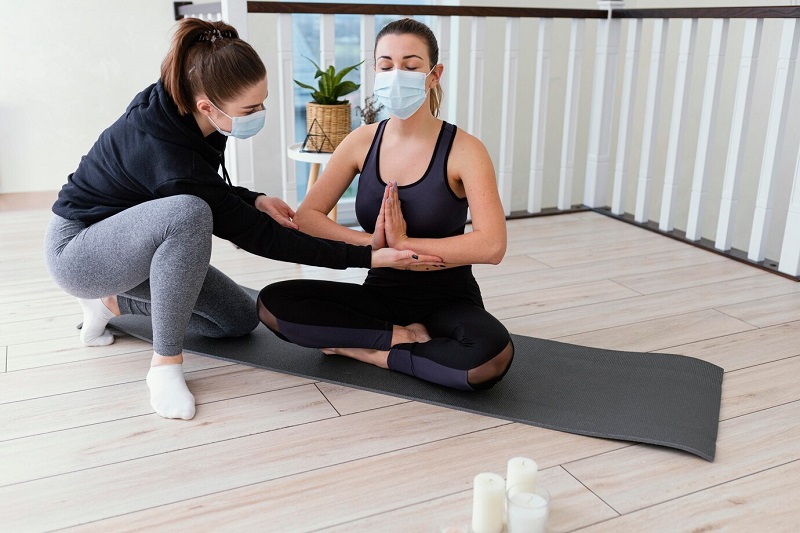
Safety Precautions and Maintenance
Inspecting springs for wear and tear
It is crucial to regularly inspect the springs in your Pilates Reformer for signs of wear and tear, as damaged springs can significantly impact the effectiveness of your workouts and potentially lead to injury. Look out for signs such as rust, cracks, or a slack appearance. If you notice any of these indications, it’s time to replace your springs.
Regular maintenance and care tips for springs and the Reformer machine
Regular maintenance can greatly extend the life and performance of your Pilates Reformer and its springs. Here are some tips: keep the machine clean, wipe down the carriage and springs after each use to prevent sweat buildup and rust. Lubricate the springs regularly to keep them functioning smoothly, and ensure the machine is stored in a dry, temperature-controlled room to prevent damage caused by humidity or extreme temperatures.
Safety precautions while using different spring tensions
Safety is paramount when using a Pilates Reformer. When adjusting spring tensions, do so carefully to avoid sudden movements that could jolt the machine or cause injury. Always ensure the Reformer is on a sturdy, flat surface to prevent tipping or sliding during use. Lastly, never exceed the recommended maximum tension or use springs that are too heavy for your current fitness level. Safety should always take precedence over pushing your limits.
Conclusion
The springs on a Pilates Reformer are more than just resistance tools; they are the heartbeat of the machine, dictating the pace, intensity, and versatility of your workout. Each spring offers a unique level of tension, allowing you to tailor your workout to your individual needs and goals. Whether you’re a beginner or an advanced practitioner, understanding the role and functionality of these springs can help you optimize your Pilates Reformer sessions.
Safety should be your primary concern when using the Pilates Reformer. Regularly inspect your springs for any signs of wear and tear, and replace them at the first sign of damage. Regular maintenance and proper care will not only prolong the life of your springs but also ensure a safer and more effective workout.
Remember, the Pilates Reformer is a powerful tool, but only when used correctly. A trained instructor’s guidance can be invaluable in helping you to use the machine effectively and safely. They can assist you in adjusting the springs correctly, maintaining proper form, and guiding you through the exercises.
Finally, don’t be afraid to experiment with different spring tensions. Each spring offers a unique tension level, enabling you to diversify your workout and challenge your body in new ways. Just remember to always listen to your body and adjust the tension accordingly.
In conclusion, the springs on a Pilates Reformer offer an array of possibilities, enabling you to customize your workout, challenge your body, and achieve your fitness goals. However, the importance of proper guidance and adherence to safety protocols cannot be overstated. So, go forth and explore the versatile world of Pilates Reformer springs, but always remember to do so safely and under professional guidance.
Frequently Asked Questions
Signs of wear and tear in the springs of your Pilates Reformer include rust, cracks, or a slack appearance. These signs indicate that it’s time to replace your springs to ensure the effectiveness of your workouts and to prevent potential injury.
The spring tension on a Pilates Reformer can be adjusted based on the level of challenge you desire in your workout. If an exercise feels overly strenuous or causes discomfort, decrease the spring tension. If an exercise feels too easy, increase it. Remember, the goal is not about using the highest resistance but using the right resistance for your current fitness level and goals.
A trained instructor provides invaluable guidance, especially for beginners. They help you adjust the springs correctly, maintain proper form, and guide you through the exercises. They can also offer modifications for different fitness levels or physical limitations, ensuring you get the most out of your workout while minimizing the risk of injury.


